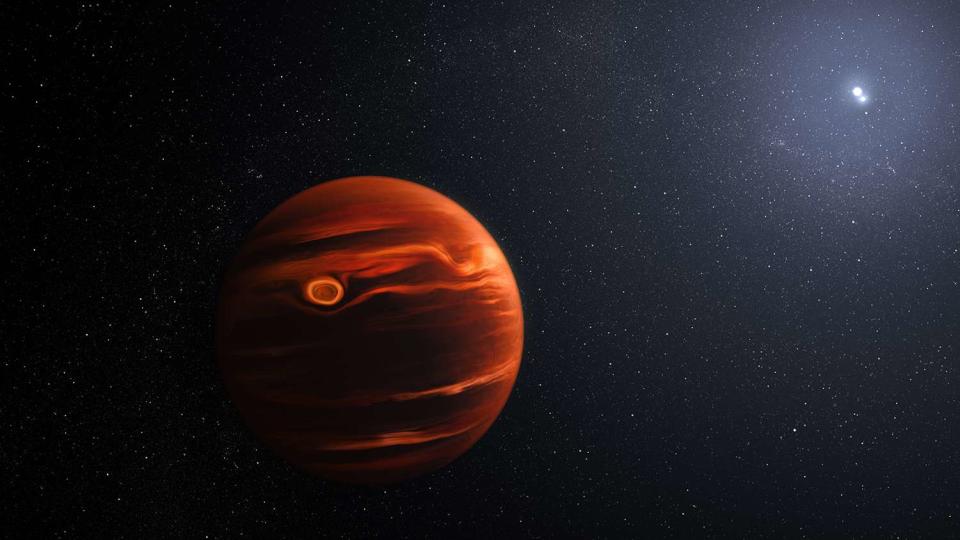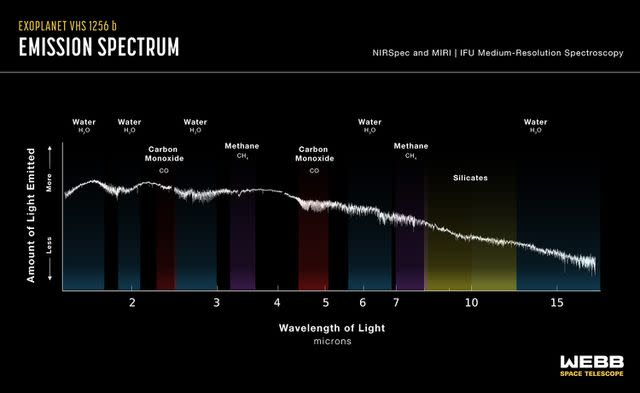James Webb Telescope Finds 'Swirling Clouds' on Planet with 22-Hour Day and 1,500-Degree Temps
The telescope also detected water, methane and carbon monoxide as well as of evidence of carbon dioxide on the planet

NASA's James Webb space telescope uncovered "swirling clouds" on a distant planet, indicating a significant scientific finding.
According to NASA, the cloud features are "so dramatic that it is the most variable planetary-mass object known to date."
Researchers explain that the distant planet's "atmosphere is constantly rising, mixing, and moving during its 22-hour day," which means hotter material rises up which pushes colder material down. This results in significant brightness changes that haven't been detected anywhere else.
The team, led by Brittany Miles of the University of Arizona, also made "extraordinarily clear" detections of water, methane and carbon monoxide from Webb's telescope data, as well as evidence of carbon dioxide.
What's the significance? This is the largest number of molecules ever identified, all at once, on a planet outside our solar system.
The planet is named VHS 1256 b and is about 40 light-years away. It orbits two stars, with each rotation taking more than 10,000 years.
"VHS 1256 b is about four times farther from its stars than Pluto is from our Sun, which makes it a great target for Webb," Miles said in a statement from NASA. "That means the planet's light is not mixed with light from its stars."
The recently-discovered "swirling clouds" are high in the planet's atmosphere where temperatures reach a scorching 1,500 degrees Fahrenheit. The telescope findings revealed that the clouds consist of both larger and smaller silicate dust grains.

"The finer silicate grains in its atmosphere may be more like tiny particles in smoke," said co-author Beth Biller of the University of Edinburgh in Scotland. "The larger grains might be more like very hot, very small sand particles."
The planet can be seen by Webb because it has low gravity compared to "more massive" brown dwarfs, which are failed stars about the size of Jupiter that are composed mainly of hydrogen gas.
Never miss a story — sign up for PEOPLE's free daily newsletter to stay up-to-date on the best of what PEOPLE has to offer, from juicy celebrity news to compelling human interest stories.
One reason VHS 1256 b skies are so turbulent is the planet's age. In astronomical terms, it's quite young. Only 150 million years have passed since it formed — and it will continue to change and cool over billions of years.
According to NASA, the team considers these findings to "be the first 'coins' pulled out of a spectrum that researchers view as a treasure chest of data." They consider this discovery the first step in wholly identifying its contents.
RELATED VIDEO: NASA'S Webb Telescope Captures Incredible Never-Before-Seen View of the Pillars of Creation
"We've identified silicates, but better understanding which grain sizes and shapes match specific types of clouds is going to take a lot of additional work," Miles said. "This is not the final word on this planet – it is the beginning of a large-scale modeling effort to fit Webb's complex data."
Previously, all of the features the team observed have been spotted on other planets elsewhere in the Milky Way by other telescopes, but always, only one at a time.
"No other telescope has identified so many features at once for a single target," said co-author Andrew Skemer of the University of California, Santa Cruz. "We're seeing a lot of molecules in a single spectrum from Webb that detail the planet's dynamic cloud and weather systems."
For more People news, make sure to sign up for our newsletter!
Read the original article on People.

